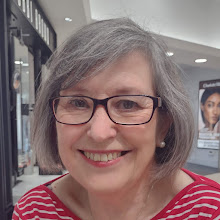What? You've never heard of "Old Crome", the Norfolk artist, who lived 1768-1821? But you do know his contemporaries Constable [1776-1827] and Turner [1775-1851] don't you? Norwich Castle has been holding an exhibition this summer, finishing this weekend, called "A Passion for Landscape - Rediscovering John Crome"
This year is the bicentenary of his death. It is over 50 years since anyone has held an exhibition dedicated to his works - yet he is mostly forgotten now.Often known as 'Old Crome' to distinguish between himself and his artist son, John Berney Crome, this man came from humble beginnings. John Crome was the co-founder of The Norwich School Of Art- the first such art group outside of London
The son of a weaver, his standard of literacy was poor. He was apprenticed to a sign writer/coach painter and had no formal artistic training. He idd not exhibit until he was 36 - but by then had become painting master to many of the important Norfolk families [such as the Gurneys of Earlham Hall - where he taught young Betsey, later known as Elizabeth Fry the great prison reformer]
He was gifted at watercolours, etchings, and oils, working on landscapes and more detailed nature paintings. Indeed he was incredibly observant- he and Constable were the first two English painters to really paint trees carefully, so the species can be identified. [This is the Poringland Oak] But unlike other artists with rich patrons, Crome was really hard up - he used cast off aprons stretched out for his canvases, and clipped hair from the horses' tails to make his brushes. He used cheaper open weave twill rather than expensive canvas, and a limited palette of colours.
And yet he used that to his advantage - when painting a picture of fisherman with baskets, he leaves the twill cloth unpainted to better represent the weave of their creels.
 Sadly many of Crome's paintings have suffered from light damage and have faded badly. This study of the blacksmith's shop near Hingham [a scene he painted many times] would have had much brighter colours when it was first painted. Crome painted Norfolk as he saw it- aware perhaps that the county was changing and many of the vistas he enjoyed would soon be changed forever as the population grew.
Sadly many of Crome's paintings have suffered from light damage and have faded badly. This study of the blacksmith's shop near Hingham [a scene he painted many times] would have had much brighter colours when it was first painted. Crome painted Norfolk as he saw it- aware perhaps that the county was changing and many of the vistas he enjoyed would soon be changed forever as the population grew.
He painted the ordinary, the quotidian - but with grace and care "If your subject is a pigsty, dignify it" Maybe his humble origins gave him a special fondness for the day-to-day sights in his home county, and he did not need grandeur or lavish decoration.
His childhood had been peopled by merchants, dyers, rivermen, and he had observed the patterns on the water, and the life of the river, people at work, but also at leisure, paddling, swimming, rowing. He also saw dilapidated housing, shabby mills, crowded workshops - and his work bears testimony to the grittier side of life too.
Bob and I both greatly enjoyed this exhibition - lots to see, and to consider. The video below is quite long- but gives a good flavour of what we saw.
We have just purchased a Norfolk Museums Pass [Joint Seniors] This has cost us £63 - but over the course of a year, we feel we will get our money's worth. The Castle trip would have been £12 - and a trip to nearby Gressenhall to see the woodworking next weekend will be £26. Having the Pass means we will be able to go to all sorts of events - we have unlimited admissions to all 10 of the Norfolk Museums. And I suspect we will be taking a grandchild along with us too sometimes.






What wonderful artwork. Even faded, that painting of the blacksmith's shop is appealing. Great idea to buy the pass, they are usually well worth having and they give opportunities to return rather than having to see everything on one trip.
ReplyDeleteThe opportunity to revisit makes it good value. There was so much detail in the Blacksmith's Shop piece
DeleteThank you for sharing this information. I admit I have not heard of the artist! I enjoyed watching the video you have linked. :) I think getting the museum pass was a very good idea! I hope you get to visit many of the museums and will share highlights of your visits with us.
ReplyDeleteTo my shame, I have known about him for many years because he was local to Norfolk, and I grew up in this county- but I'd never studied his work properly till now.
DeleteThe museum pass was a really good idea to purchase- you're already a significant way through 'paying it off' with this and your other planned visit and it DOES make you go to places if you have something like this. Crome's work is very appealing and I like the idea of using the texture of his material to emulate the creels.
ReplyDelete